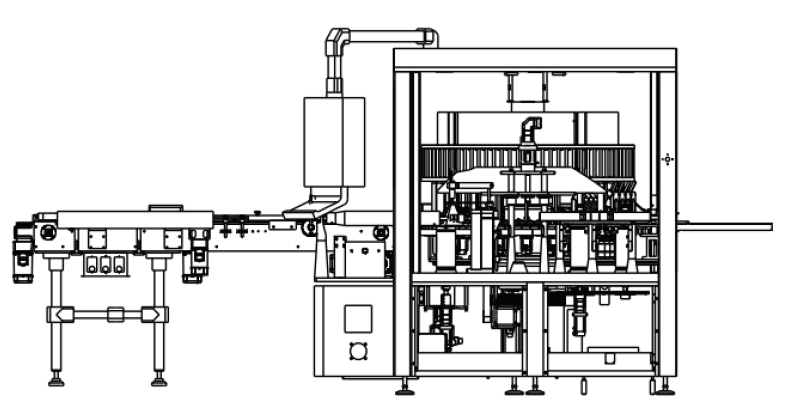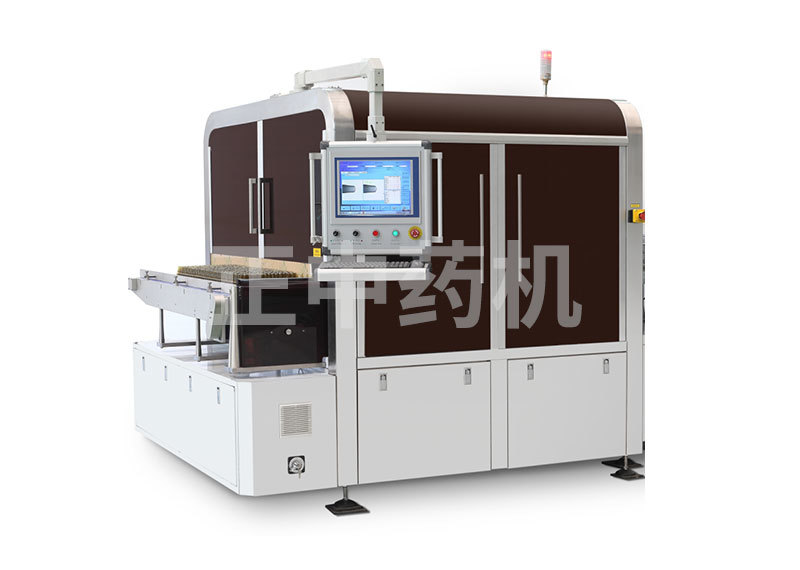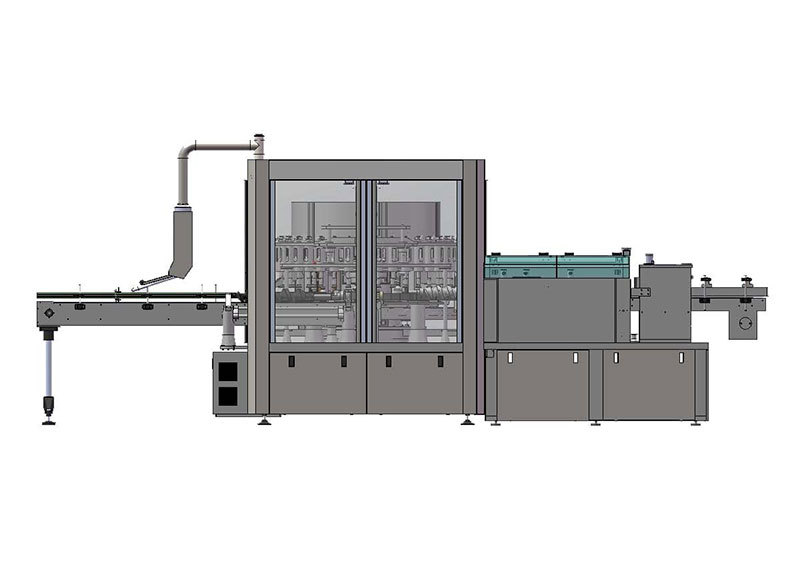Product Center
-
● Automatic inspection machine for particulate matter in ampoules
-
● Automatic inspection machine for oral liquid foreign objects
-
● Automatic inspection machine for lyophilized preparations in vials
-
● Automatic foreign object inspection machine for plastic bottle intravenous infusions
-
● Electronic microporous leak detector for ampoule injections
-
● Fully automatic electronic microporous leak detector for infusion
-
● Automatic foreign object inspection machine for glass bottle intravenous infusions
-
● In-line plastic ampoule electronic micro-hole leak detector
JYWDY600 Fully Automatic Vial Inspection Machine
Mainly engaged in the research and development of ceramic new material valves, with metal valves (gate valves, globe valves, ball valves, butterfly valves) as a secondary business. Ceramic valves have been successfully applied in many new energy battery material plants, thermal power plants, nuclear power plants, chemical plants, steel plants, coal chemical industry, polysilicon and other industries, and have been listed as special-purpose products, contributing to energy conservation and environmental protection for enterprises and society.
Category
Fully automatic electronic microporous leak detector for infusion

Details
Main Uses
Primarily used for the detection of visible foreign particles (including glass shards, fibers, hair, white clumps, white spots, and more) in liquid-filled vials; also applicable for defect inspection of lyophilized powder in vials (covering issues such as powder cake defects, powder height, and cap-sealing quality).
How it works
This machine utilizes the principle of machine vision: after the product being inspected rotates at high speed, it is brought to a controlled stop. An industrial camera then continuously captures images, which are analyzed by a computer system to determine whether the product meets quality standards—and automatically sorts out合格品 (qualified products) from 不合格品 (non-qualified products).
When inspecting the lyophilized powder, the product under test is slowly and evenly rotated while a camera tracks and captures continuous images. These images are then analyzed to determine whether the product meets quality standards, and any non-conforming items are automatically rejected.
Process Flow
Product awaiting inspection → Auger feeds bottles → Bottle-pressing clamp holds bottles → Bottle spinning → Braking → Photography → Image processing and analysis → Bottle discharge → Separation of合格品 (qualified products) and 不合格品 (non-qualified products)

Main Technical Parameters
Applicable scope: Water injections and lyophilized powders in vials with diameters less than 22 mm;
Testing items include: visible foreign objects in water injections (glass shards, fibers, hair, white spots, white particles, etc.), abnormal fill volume, floating debris, large glass fragments settling at the bottom, improper capping, damaged plastic caps, and color spots; for lyophilized products, defects such as shrinkage of the powder cake, voids, bottom dissolution, and foreign matter on the outer surface are checked, along with powder cake height, vial appearance, cracks, abnormal fill volume, crystal formation, improper capping, damaged plastic caps, and color spots.
Detection speed: 600 (1 ± 5%) bottles per minute;
Detection accuracy: 40 µm (adjustable, suitable for water-soluble needles);
Capacitance: 9.5 kW;
Voltage: 380V, 50Hz;
Workbench height: 960mm;
External dimensions: 2481mm × 2467mm × 1800mm (length × width × height, excluding the feeding platform and connecting conveyor belt);
Net weight: Approximately 3,500 kg.
Key Features
- The entire machine features a brand-new, patented design with an innovative and more rational structure, ensuring stable operation and convenient maintenance and handling.
- The entire machine features full servo drive, ensuring more precise transmission and making operation adjustments even more convenient.
- It employs the internationally recognized top-and-bottom clamping bottle-holding method, along with a patented rotary bottle-driving mechanism that ensures both stable bottle gripping and consistent rotation speed—while also making cleaning and maintenance convenient.
- The rotary bottle servo system and the detection device are both mounted on the workbench panel, which completely isolates the underlying transmission mechanism, making operation, maintenance, and cleaning more convenient and straightforward.
- All components feature a quick-release design, making component replacement even easier.
- Using a screw conveyor for bottle feeding ensures seamless coordination when the machine is connected front-to-back.
- It features multiple fault alarms and protection functions; when a malfunction occurs or improper operation takes place, the machine will either sound an alarm or shut down, while also displaying the cause of the failure.
- All test data can be saved, uploaded, and printed;
- Mature optical systems and algorithmic programs are used to develop the optimal detection solution based on actual conditions.
- Key components such as the screw conveyor and agitator wheels are manufactured using precision CNC machining. Light sources, lenses, and major electrical components are sourced from internationally renowned brands.
Mainly engaged in the research and development of ceramic new material valves, with metal valves (gate valves, globe valves, ball valves, butterfly valves) as a secondary business. Ceramic valves have been successfully applied in many new energy battery material plants, thermal power plants, nuclear power plants, chemical plants, steel plants, coal chemical industry, polysilicon and other industries, and have been listed as special-purpose products, contributing to energy conservation and environmental protection for enterprises and society.
Main Uses
Primarily used for the detection of visible foreign particles (including glass shards, fibers, hair, white clumps, white spots, and more) in liquid-filled vials; also applicable for defect inspection of lyophilized powder in vials (covering issues such as powder cake defects, powder height, and cap-sealing quality).
How it works
This machine utilizes the principle of machine vision: after the product being inspected rotates at high speed, it is brought to a controlled stop. An industrial camera then continuously captures images, which are analyzed by a computer system to determine whether the product meets quality standards—and automatically sorts out合格品 (qualified products) from 不合格品 (non-qualified products).
When inspecting the lyophilized powder, the product under test is slowly and evenly rotated while a camera tracks and captures continuous images. These images are then analyzed to determine whether the product meets quality standards, and any non-conforming items are automatically rejected.
Process Flow
Product awaiting inspection → Auger feeds bottles → Bottle-pressing clamp holds bottles → Bottle spinning → Braking → Photography → Image processing and analysis → Bottle discharge → Separation of合格品 (qualified products) and 不合格品 (non-qualified products)

Main Technical Parameters
Applicable scope: Water injections and lyophilized powders in vials with diameters less than 22 mm;
Testing items include: visible foreign objects in water injections (glass shards, fibers, hair, white spots, white particles, etc.), abnormal fill volume, floating debris, large glass fragments settling at the bottom, improper capping, damaged plastic caps, and color spots; for lyophilized products, defects such as shrinkage of the powder cake, voids, bottom dissolution, and foreign matter on the outer surface are checked, along with powder cake height, vial appearance, cracks, abnormal fill volume, crystal formation, improper capping, damaged plastic caps, and color spots.
Detection speed: 600 (1 ± 5%) bottles per minute;
Detection accuracy: 40 µm (adjustable, suitable for water-soluble needles);
Capacitance: 9.5 kW;
Voltage: 380V, 50Hz;
Workbench height: 960mm;
External dimensions: 2481mm × 2467mm × 1800mm (length × width × height, excluding the feeding platform and connecting conveyor belt);
Net weight: Approximately 3,500 kg.
Key Features
- The entire machine features a brand-new, patented design with an innovative and more rational structure, ensuring stable operation and convenient maintenance and handling.
- The entire machine features full servo drive, ensuring more precise transmission and making operation adjustments even more convenient.
- It employs the internationally recognized top-and-bottom clamping bottle-holding method, along with a patented rotary bottle-driving mechanism that ensures both stable bottle gripping and consistent rotation speed—while also making cleaning and maintenance convenient.
- The rotary bottle servo system and the detection device are both mounted on the workbench panel, which completely isolates the underlying transmission mechanism, making operation, maintenance, and cleaning more convenient and straightforward.
- All components feature a quick-release design, making component replacement even easier.
- Using a screw conveyor for bottle feeding ensures seamless coordination when the machine is connected front-to-back.
- It features multiple fault alarms and protection functions; when a malfunction occurs or improper operation takes place, the machine will either sound an alarm or shut down, while also displaying the cause of the failure.
- All test data can be saved, uploaded, and printed;
- Mature optical systems and algorithmic programs are used to develop the optimal detection solution based on actual conditions.
- Key components such as the screw conveyor and agitator wheels are manufactured using precision CNC machining. Light sources, lenses, and major electrical components are sourced from internationally renowned brands.
Previous Page
Previous Page
Related Products
Inquiry



